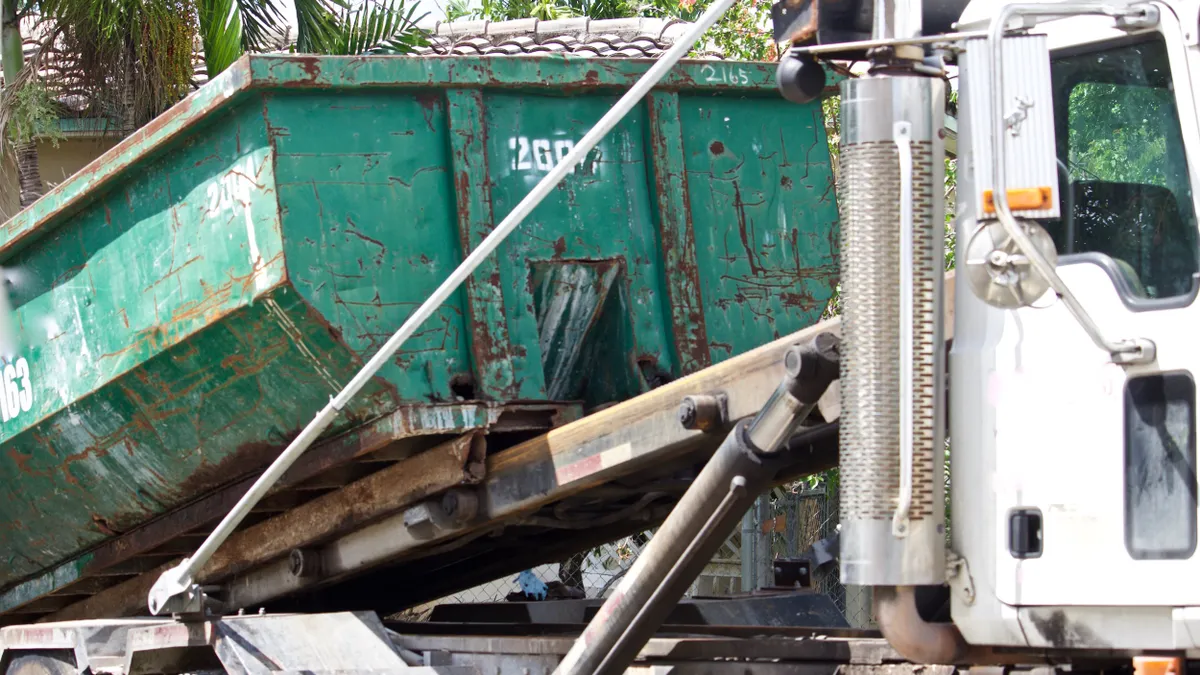Dive Brief:
- Compology is reporting fast adoption of its new CScore system, which helps quantify commercial container contamination prior to collection. Waste Management has reportedly seen recycling contamination rates drop by 65% over six months in Northwest cities such as Seattle, Portland and Vancouver since using it.
- Another notable use case is Livermore Sanitation, which saw organic waste contamination rates drop by 80% over six months across all franchise customers. "If it's a restaurant in Livermore, California, it has Compology," CEO Jason Gates told Waste Dive.
- In response to customer feedback, and using the company's AI machine learning capabilities, Compology has also expanded the list of contaminants its container cameras can identify. New items include bags, tanglers, expanded polystyrene foam, propane tanks, e-waste, metals, bulky items, uncollapsed cardboard, people and more.
Dive Insight:
Contamination continues to be one of the industry's biggest focal points around the collection of recyclables and organics.
Service providers of all sizes are trying to determine how to stop and price for it. At the same time, regionally specific rules, changing market demands and fluctuating waste streams have made it one of the harder terms to define.
The California company's camera technology had already been gaining traction as a way to assess container levels and optimize collection timing, but its new focus on contamination appears to have opened up a new set of opportunities. Now that Compology has collected nearly 40 million images from containers in the U.S., Canada and Mexico, it has a clear pulse on common issues in the continental waste stream.
According to Gates, customers have been using the CScore offering in two primary ways — reducing general contamination and figuring out how to bill for it fairly.
As confirmed by the latest round of quarterly earnings reports, an extended period of low average commodity prices has affected profitability for companies in the business of collecting and processing recyclables. Aside from raising prices, a common first step has been to start charging new or higher contamination fees for customers with repeat issues.
"A lot of waste companies are trying to think through, 'How do I pay for the processing of contaminated material without increasing my rates for everybody?'" said Gates.
The expanded list of identifiable contaminants was developed from customer feedback as well as consultation with MRFs. The items cited are well-known for their role in causing unplanned downtime or safety hazards at facilities. The request to identify people in containers was a result of many close calls or serious incidents at the point of collection. Gates confirmed this function has already helped multiple drivers identify people before arriving at a stop.
While the West Coast remains among the most active areas for Compology — due to longstanding recycling requirements and a push for organics recycling driven by laws such as California's SB 1383 — one of the company's next priorities is standardizing educational tools for any area. This will mean more automatic communication via email or text messages, as opposed to the traditional approach.
"It's moving away from flyers and handouts and very broad messaging," said Gates. "We use technology to deliver extremely targeted, consistent messaging through digital channels that the end waste generators are already using."















